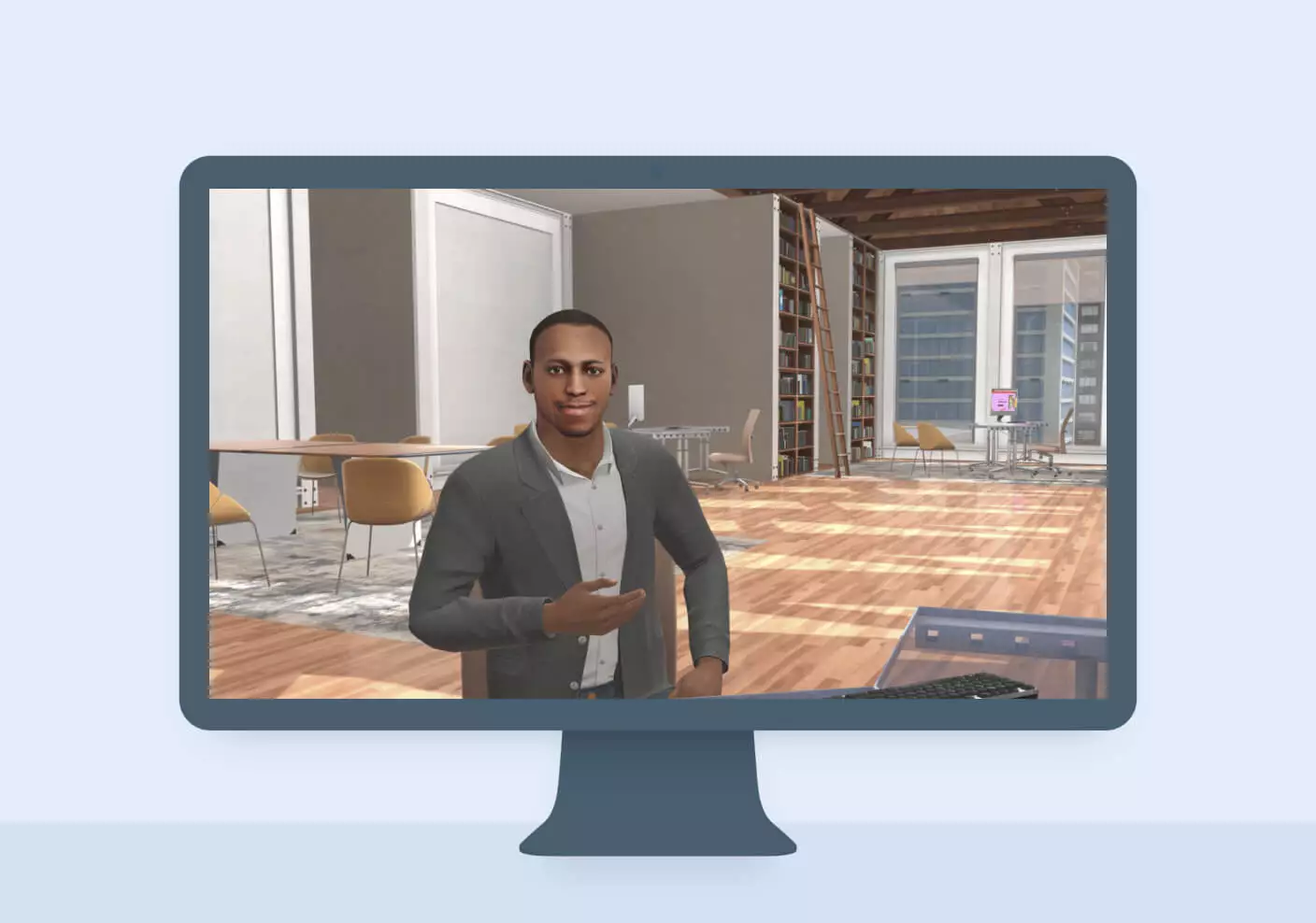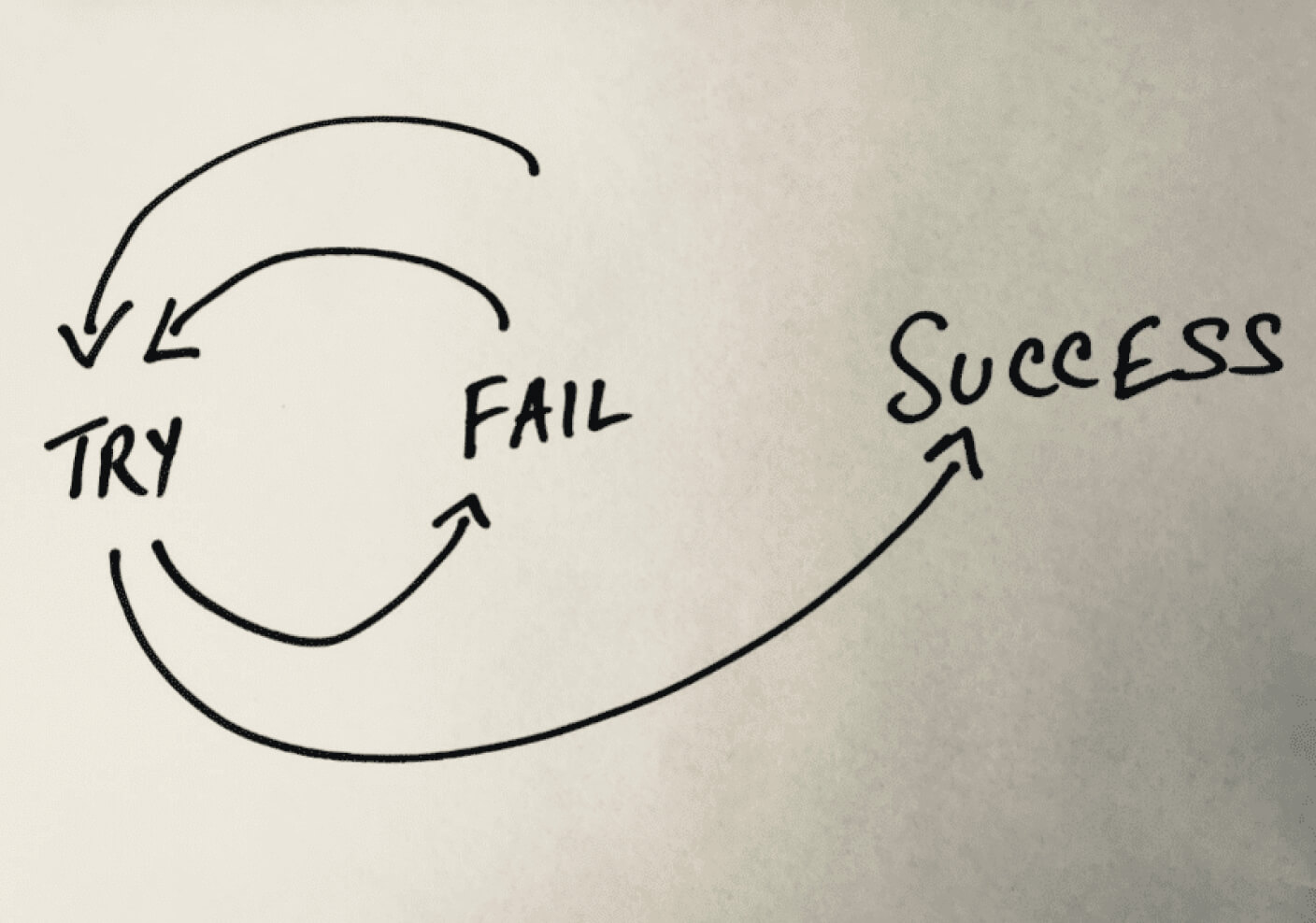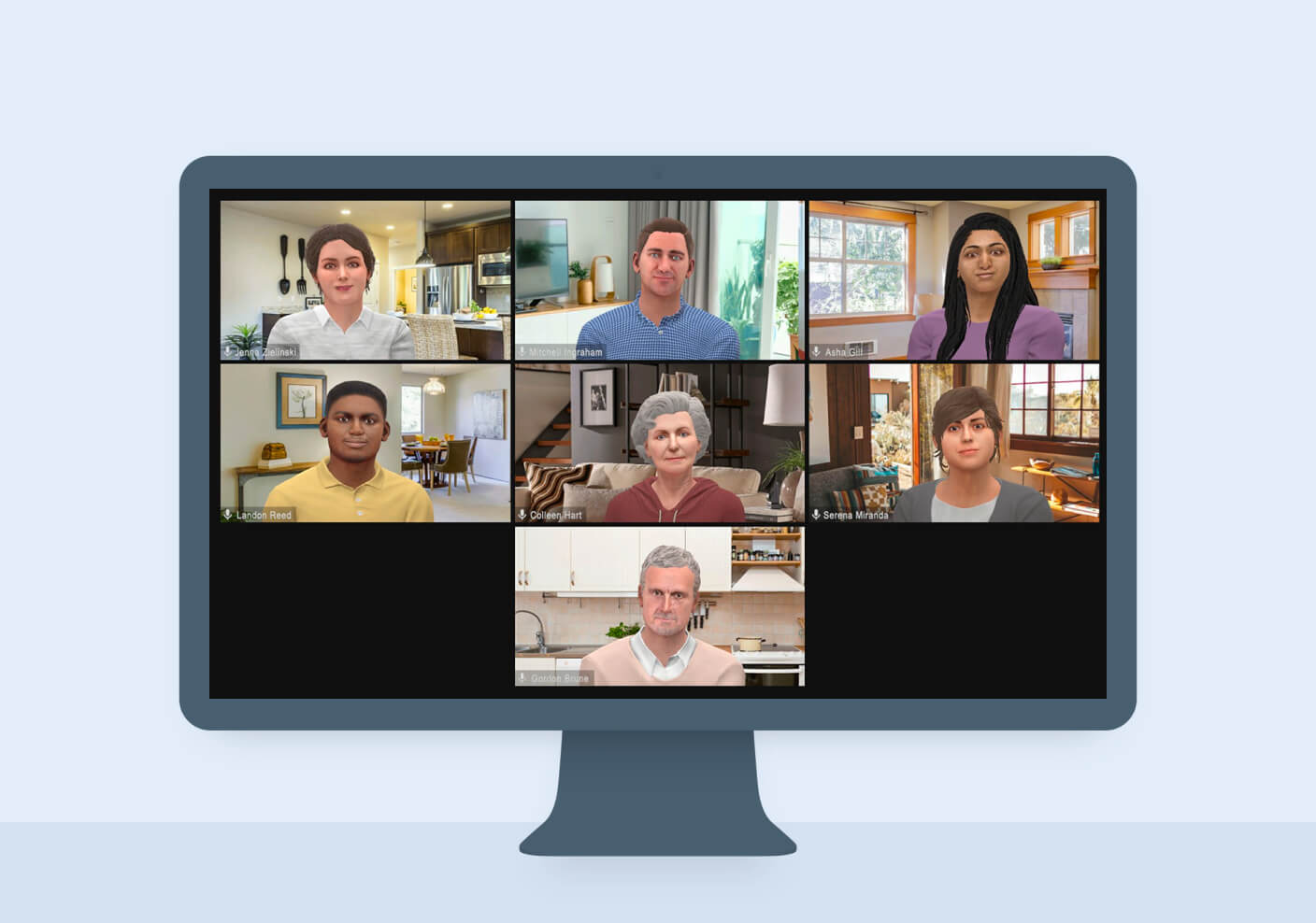The virtual reality experience has come a long way since its 20th century origins. Hyper-real avatars and digitally produced surroundings now engage the participant in immersive experiences that would have been unimaginable when VR was first introduced.
Mursion’s art direction has evolved markedly since our early days, with our latest technological advancements offering opportunities to further personalize and enhance the client experience. We spoke with our gifted Art Director to learn more about our evolving design process and how it’s transforming our work and our company’s vision.
Q: What have been the most impactful enhancements to Mursion’s graphic capabilities with the rollout of our new platform?
A: The biggest advancement in the design process has been the ability to improve the renderings of our avatars. Traditionally, avatars have been completely handcrafted by 3D artists who created representations of what a virtual person looked like as opposed to using a scientific model.
We now use photography to drive the design of the avatars and embellish them on a per client basis. This is important because the participant is interacting directly with the avatars in our simulations, so we want to offer the most authentic, compelling experiences possible.
The other major development has been in the areas of voice morphing, auto talk, and head tracking, which also help to create a more realistic — and customizable — experience for our clients.
Q: Can you explain how the rendering process works? How are we able to create more realistic-looking avatars with today’s technology?
A: We use a hybrid approach, starting with raw reference photography to give us the base for the model. Once we generate a virtual avatar from a photo, we use traditional computer-generated artistic techniques to embellish the digital person to give them the fine details that lend authenticity, such as eyelashes, hair, and other features. This is definitely considered a craft because we’re trying to create convincing replicas of different ethnicities, ages, etc.
We can customize any feature of our avatars based on the client’s needs, including appearance, body mass index, age, and more. For example, one client likes to see their avatars have tattoos and piercings for an ultra-realistic experience. A healthcare client required custom avatars that demonstrated different disabilities and behaviors. Working with subject experts and R&D technology, we are able to add visceral animations to inject a lot of realism into the scenarios. The amount of custom work we do has increased significantly to much success and repeat business.
Q: Can you describe how our avatar voice technology has improved?
A: With our latest advancements, we utilize proprietary technology that is built into the software. We’re able to change any number of parameters to alter the quality of the sound. We can control pitch, modify and modulate, whisper, etc. It accentuates the realism of having an actual conversation.
Now, with our auto-talk feature, we can analyze the audio coming through the microphone, dissect the speech, produce specific sounds, and recreate those elements digitally on the mouths of the avatar. In addition, our software is networked, so the client and the local version are in sync, creating a much more fluid and responsive conversation.
Q: Can you explain how we approach designing the digital environments of our simulations?
A: We have two major approaches to designing virtual environments. One is a rapid approach that allows clients to implement training quickly. Within two weeks we can build a custom, one-dimensional environment via reference photography provided by the client.
We also have the capabilities to build environments in full VR featuring simulations in different parts of the space. That makes it a much more robust versatile environment with enhanced capabilities and a more-lifelike immersive experience.
Subscribe for the latest Mursion articles and updates.
By clicking the sign up button above, you consent to allow Mursion to store and process the personal information submitted above to provide you the content requested. View our Terms and Conditions.




